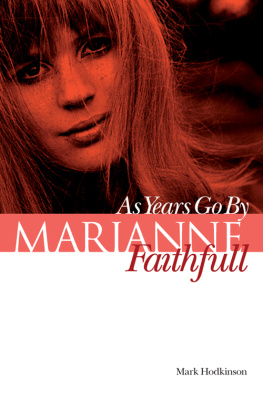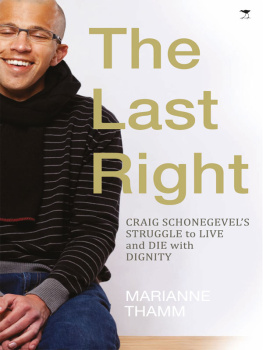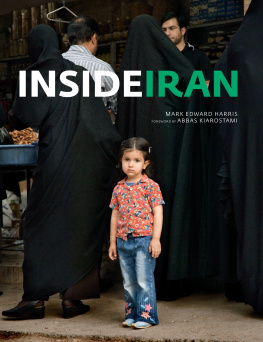Marianne Be is a post-doctoral research associate at the Department of Archaeology, History, Cultural Studies and Religion, University of Bergen. She is an historian of religions who holds a PhD from the Centre for Womens and Gender Studies, University of Bergen. She has published widely on womens issues and religion, as well as on Muslim family law and Islam in Iran and in Europe.
FAMILY LAW IN
CONTEMPORARY
IRAN
Womens Rights Activism and Sharia
M ARIANNE B E
First published in 2015 by I.B.Tauris & Co. Ltd
www.ibtauris.com
Distributed worldwide by I.B.Tauris & Co Ltd
Registered office: 6 Salem Road, London W2 4BU
Copyright 2015 Marianne Be
The right of Marianne Be to be identified as the author of this work has been asserted by the author in accordance with the Copyright, Designs and Patents Act 1988.
All rights reserved. Except for brief quotations in a review, this book, or any part thereof, may not be reproduced, stored in or introduced into a retrieval system, or transmitted, in any form or by any means, electronic, mechanical, photocopying, recording or otherwise, without the prior written permission of the publisher.
References to websites were correct at the time of writing.
International Library of Iranian Studies 54
ISBN: 978 1 78076 900 4
eISBN: 978 0 85773 763 2
A full CIP record for this book is available from the British Library
A full CIP record is available from the Library of Congress
Library of Congress Catalog Card Number: available
For Liv
ABBREVIATIONS
| CEDAW | Convention on the Elimination of all forms of Discrimination Against Women |
| FPB | Family Protection Bill (Layehe-ye Hemayat-e az Khanevadeh) |
| FPL | Family Protection Law (Qanun-e Hemayat-e Khanevadeh) |
| ILNA | Iranian Labour News Agency |
| IRNA | Islamic Republic News Agency |
| NRK | Norwegian Broadcasting Association (Norsk rikskringkasting AS) |
| OMSC | One Million Signatures Campaign (Yek Milyun Emza-ye Baraye Taghir-e Qavanin-e Tabiz Amiz) |
| SIS | Sisters in Islam |
| WLUML | Women Living Under Muslim Laws |
| WOI | Womens Organisation of Iran (Sazeman-e Zanan-e Iran) |
| WSIR | Womens Society of the Islamic Revolution (Jame-ye Zanan-e Enghelab-e Eslami) |
TRANSLITERATION AND TRANSLATION
In the text, both standard Arabic and standard Persian terms are used. The transliteration is based on a simplified version of the IJMES transliteration guide. In the text, the letters (ayn) and (hamza) are marked respectively and , but diacritical characters and markers showing length of vowels are disregarded. In addition, the letter is denoted by either y or i. Regular English spelling for words commonly translated from Arabic or Persian, such as Qur'an and Shah, is employed. Arabic and Persian words not commonly used in English are italicised. Unless otherwise mentioned, all translations from Persian and Arabic are by the present author.
ACKNOWLEDGEMENTS
The research that forms the basis of this book was originally conducted as a PhD project at the University of Bergen, Norway, from 2008 until 2012. Many people have guided and supported me through the project. First and foremost, I am grateful to all the interviewees who have given of their time and knowledge. Without their contribution, there would have been no book. I also want to thank Laleh and Mahta for the help, love and care they have provided during my stays in Tehran. Daste shoma dard nakone! I would like to offer a special thanks to my main supervisor Richard J. Natvig, and to the two co-supervisors I have had in this process, Knut S. Vikr and Ellen Mortensen. I am indebted to colleagues at the Centre for Women's and Gender Research (SKOK), the Department of Archaeology, History, Culture, and Religion (AHKR), and those affiliated with the Centre for Middle Eastern and Islamic Studies (SMI), who have given of their time to read and discuss my work, both in academic and social settings. I particularly want to mention Anders Bjrkelo, Ingvild Flaskerud, Eirik Hovden, Kari Jegerstedt, Lisbeth Mikaelsson, Ziba Mir-Hosseini, Valentine M. Moghadam, Gaudencia Mutema, Catharina Raudvere, Hkan Rydving, Mahmoud Salih, Gilda Seddighi, David Thurfjell, Liv Tnnessen and Hans Geir Aasmundsen. I would also like to give a special thanks to Virginia Myers for her assistance as copy-editor, and to Alan Qaderi for patiently reading and translating Persian texts with me. Finally, I want to express gratitude to family and friends for always taking an interest in my work, and to my mother Eli and father Arnt Even for all the love and support. Most of all, I thank Kevin for being my biggest fan throughout it all.
INTRODUCTION
Family law has been a divisive and ongoing issue of debate in Iran since the early 1900s. Throughout different periods, various forms of codification have been launched seeking to fulfil a dual purpose of implementing both Sharia and womens rights. The most recent initiative came in 2007, when the Family Protection Bill (Layehe-ye Hemayat-e az Khanevadeh) was introduced. With this bill, family law once again emerged as a contentious issue, to which womens rights activists have offered significant contributions. Ayatollah Khomeini, Ali Shariati, Forough Farrokhzad and Mehrangiz Manoochehrian, to mention a few. Accordingly, they offer a vivid glimpse into the ideas of Sharia and womens rights at play in contemporary Iranian society.
The quest for a family law code in Iran
Discussions on family law legislation are not new to Iran. The quest for a designated Iranian family law code has been persistent throughout the states modern history. In terms of legal codifications, the development of family law can be summarised in three main waves. The Iranian Civil Code from 1928 represented the first designated family law codification, and a second initiative was enacted in the Family Protection Law in 1967. In 1979, with the establishment of the Islamic Republic of Iran, the 1967 Act was officially denounced. Since then only isolated reforms have been passed in family law, and together with the 1928 Iranian Civil Code they have served as the legal basis for family law rulings since 1979. However, a substitute codification of family law was lacking until 2007, when the so-called Family Protection Bill was introduced. In effect, this bill was the first official draft of an Iranian family law code in 40 years.
The Family Protection Bill represents a comprehensive draft of family law legislation, and with it the debate on family law once again emerged as a divisive public issue. The government of President Mahmoud Ahmadinejad (200513) initially introduced the bill in 2007, although the first preparations are said to date further back. How to regulate Sharia in a contemporary Islamic state, and in particular the practices of polygyny (chandhamsari), dower (mehrieh) and temporary marriage (sighe/muta), were among the most conflict-ridden topics. One of the more contentious issues has been whether a man has an unlimited right to take more than one wife, or if he is dependent on his first wifes consent. In addition, the limits of state or private regulation of temporary marriage and dower have been discussed. Mainly, three articles of the bill were the subject of public debate:











